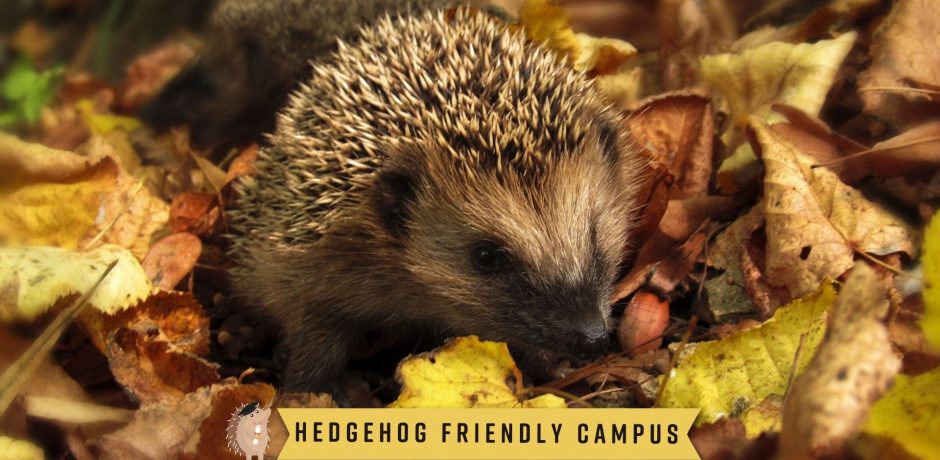Hedgehogs are the cute and well-loved mammals you might have been lucky enough to see exploring your garden. Unfortunately, the UK population has fallen by about two-thirds in the last 25 years alone. Evidence shows us that populations decline more in rural areas, such as the countryside, and are coping better in villages and towns. A key factor in this decline is thought to be a lack of food and suitable habitats.
But the fight for our little friends is far from over. There is so much we can do to help improve our environment for hedgehogs and other wildlife. Plus, it is a lot simpler than you might think – even for you relaxed gardeners!
One of the most efficient ways to support hedgehogs and your local wildlife is to create a unique space filled with diversity and a range of levels where they can thrive. Native plants are a perfect choice for a hog friendly garden. There may be local wildlife that relies on them as a food source for the best nutrients or nesting materials. Not only will they support your local wildlife, but it will also help to increase the native plant species which are becoming more scarce to find.
Non-native plants can also be helpful to local wildlife; however, native species are more beneficial. Some species I would suggest starting with include Wild White Clover, Common Knapweed, Ox-eye Daisy or Field Scabious.
Two of my favourites, which I have in my own garden, include Silene diocia also known as Red Campion, and Meadow Cranesbill – a type of Geranium.
Having an area of your garden dedicated to wild plant species will help increase your number of insects and other invertebrates. This is helpful to hedgehogs as they are the hogs main food source, but it is also helpful to other key environmental issues.
You don’t need to be a skilled gardener to have a wildlife-friendly space. Feel free to let your patch grow wild and allow Mother Nature to do the work! Even if you are green-fingered, try not to be too tidy. Having some dead foliage allows for good habitats for insects and invertebrates. Leaving old logs or piles of leaves may not be the most attractive part of your plot to the human eye, however, it is the perfect resting ground for hogs in the day and through hibernation and provides vital nesting materials.
When taking care of your garden you can make a huge difference to the ecosystem by simply avoiding slug pellets and pesticides. These poisons are directly harmful to hedgehogs, not to mention our other garden friends, and can also kill off their main food source leaving them starving.
In the run-up to hibernation, it is vital that hedgehogs store enough fat to survive the hibernation period. Leaving small shallow dishes of food and water out at night can help them prepare for a long winter. Meaty cat or dog food (wet and dry), or even special hedgehog food is a perfect source of protein. Please avoid fish-based foods or milk as it can be harmful to hedgehogs.
You can start putting food out as early as springtime after they leave hibernation, but natural food sources start to become hard to find in dry or hot weather. Late summer and autumn is the most beneficial time as it is when hedgehogs are building up their fat reserves for hibernation.
Hedgehogs may be small but they can travel around a mile every night. They venture from place to place finding new resting grounds and food – only remaining in the same location for the long winter sleep. With the decline in suitable habitats for hedgehogs, and evidence showing that populations are coping better in villages and towns than rural areas, our gardens may be the best grounds for our friends adventuring. If you don’t have pets that prevent you, by creating a 13cm x 13cm gap in a fence line or wall you can create a hedgehog highway. If you are planning to do this please encourage your neighbours to consider a wildlife-friendly patch and ensure that your tunnel does not lead to any hedgehog hating pets or other dangers. This way we can create a highway that will support and encourage an increase in the hedgehog population as well as support other wildlife.
Once your hedgehog friendly garden is complete, be mindful when having bonfires, building work or using machinery, that a little hedgehog friend could be hiding.
Now let’s go and create – together we can all give a hog a home!
To find out more about the Hedgehog Friendly Campus Campaign follow our campaign progress on social media and search for the hashtag #HogFriendlySparsholt. You can also find out some brilliant information on the British Hedgehog Preservation Society Website
By Hannah Pragnell, Access to Higher Education Student
Bibliography
Martin, J., 2019. What do hedgehogs eat. [online] Woodland Trust. Available at: <https://www.woodlandtrust.org.uk/blog/2019/07/what-hedgehogs-eat/> [Accessed 1 December 2021].
The RSPB. n.d. Wildlife Garden Ideas & Planning your Design – The RSPB. [online] Available at: <https://www.rspb.org.uk/birds-and-wildlife/advice/gardening-for-wildlife/plants-for-wildlife/planting-plan-for-wildlife-gardens/> [Accessed 1 December 2021].
Little Silver Hedgehog. n.d. Top plants for hedgehogs and wildlife. [online] Available at: <https://littlesilverhedgehog.com/2019/02/13/plants-for-hedgehogs/> [Accessed 1 December 2021].
